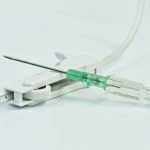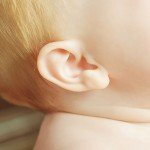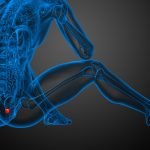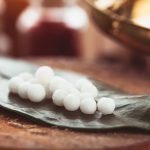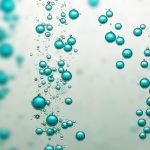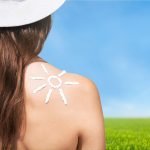Peat Therapy: The Newest Old Nature Cure Therapy Around
By Sussanna Czeranko, ND
Peat brings to mind a dry mixture used to create the right soil blend for your garden. The peat in your garden, though, is extremely different from the peat mud used as a therapeutic agent. For centuries, peat and mud have been used faithfully in Europe in balneotherapy. Balneotherapy is the use of natural thermal and mineral water for the purpose of its prophylactic, rehabilitative, or curative effects. Modern peat therapy methods have been in use since the early 19th century in Central Europe, where the oldest spas, still active today, are located.
Early nature cure clinicians and teachers such as J.H. Kellogg of rational hydrotherapy fame did not embrace peat therapy. Kellogg wrote, “the benefit [of mud therapy] is not greater than might be obtained from the scientific use of water without the mud” (1903, p. 569). To understand these differences, a rapidly emerging and substantial body of clinical and theoretical information helps us differentiate among therapeutic approaches. For example, clinicians such as Bellometti (2005), Karagűlle (2005), Prát and Brožek (1963), and Licht and Kamenetz (1963) are among a significant international community studying and documenting the clinical effectiveness of balneotherapy.
In North America, a spa generally conjures up images of estheticians lathering elite clients with beauty products. In Europe, however, a spa is a medically supervised facility with numerous therapies centered around a thermal spring. Each thermal spring conducts an analysis of the mineral content of its water resources. To be classified as a “thermal and mineral spring,” the waters must be at least 20°C and have a minimum of 1 g of ionic minerals per liter of water. Muds harvested from the springs have significant levels of minerals.
Peat mud and suspension baths as well as poultices are the most common types of peat application in balneotherapy. The International Peat Society reports that over 90% of peatlands are in the temperate and cold belt in the Northern Hemisphere. Yet, in North America, peat mud therapy is not known or implemented. Peat itself is a heterogeneous mixture of more or less decomposed plant (humus) material that has accumulated in a water-saturated environment and often in the absence of oxygen. However, without the help of microorganisms and algae, the therapeutic properties of peat would not occur.
Hattori (1963) explains that “the term peat ‘peloid’ is the generic name for substances that originate in nature by geologic processes and, in a finely divided state mixed with water, are applied to baths and packs in medical practice” (p. 273). As early as 1936 Benade proposed a classification that is practical for clinical use. There are many classifications of “subaquatic sediments” that are relevant to balneotherapy, but they are not our focus here. Hattori adds that “the most important physiochemical factor is the power of absorption or of ion exchange of the peloid. There is little doubt that the most important therapeutic action of the peloid therapy resides in its thermal properties” (p. 273). A striking property of peat peloids is that the doctor can work with patients using water at lower temperatures than is the case in hydrotherapy applications where high temperatures can have certain disadvantages in treatment. Peat peloids not only retain heat for a long time, but the experience of the patient is that the peat seems hotter than it actually is.
There is much for the naturopathic doctor to learn not only about the therapy methodologies but also about the materials in use. There are peats (high moor and low moor), organic muds, clays and kaolins, thermal muds and muds from cold springs, loams, and sand “loess.”
As information becomes available, our clinical knowledge is enhanced. For example, there are constituents in peat such as humolites, which are rich in organic matter, especially humus compounds. Muds also are another category in which minerals predominate. We learn that peloids with high organic content must be stored in a moist state and are only therapeutic in that state. If they are dry, they lose their therapeutic utility. Thus, in Europe the peat peloids are invariably stored in moist state. Mineral muds, though, can be dried and still be useable.
Many of us were not introduced to balneotherapy during our naturopathic training. The literature points increasingly to the value of balneotherapy in the treatment of rheumatic disorders and pain: arthritis, gout, myalgia, lumbago, sciatica; trauma: contusions, hematoma, strains, sprains, edema; CVD: peripheral vascular diseases, Raynaud’s disease, phlebitis, arteriosclerosis; skin diseases; gynecological disorders: dysmenorrhea, leucorrhea, infertility, endometriosis, safe for pregnancy, menopause; and many other applications such as fevers, infections, fatigue, DM, epilepsy, cancer, TB, toxicity, environmental sensitivities, and allergies. The potential is immense. The affinity of balneotherapy for our medicine is equally immense.
References
Bellometti S: Remarks from a presentation at the International Society of Medical Hydrology, Szeged, Hungary, November 14-18, 2005.
Hattori I: Peleotherapy. In Licht S, Kamenetz H (eds): Medical Hydrology, New Haven, CT, 1963, Elizabeth Licht.
International Peat Society: www:peatsociety.org
Karagűlle M: Remarks from a presentation at the International Society of Medical Hydrology, Szeged, Hungary, November 14-18, 2005.
Kellogg JH: Rational Hydrotherapy: A Manual of the Physiological and Therapeutic Effects of Hydriatic Procedures, and the Technique of their Application in the Treatment of Disease, Philadelphia, 1903, F.A. Davis.
Prát S, Brožek B: Biology and physics of peloids. In Licht S, Kamenetz H (eds): Medical Hydrology, New Haven, CT, 1963, Elizabeth Licht.
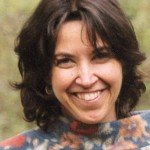 Sussanna Czeranko, ND, is a CCNM graduate and longtime nature cure doctor. Her repertoire includes the classic naturopathic modalities along with specialization in Buteyko, environmental medicine, Bowen, and hydrotherapy. Her passion for wildcrafting underscores her passion for botanicals and her deep appreciation of clinical nutrition. She has been a board member of the CAND, the Quebec Association of Naturopathic Doctors, and CCNM. Sussanna lectures widely in her specialties and practices out of her Clinic in the Woods, in the Halton Hills area of southern Ontario.
Sussanna Czeranko, ND, is a CCNM graduate and longtime nature cure doctor. Her repertoire includes the classic naturopathic modalities along with specialization in Buteyko, environmental medicine, Bowen, and hydrotherapy. Her passion for wildcrafting underscores her passion for botanicals and her deep appreciation of clinical nutrition. She has been a board member of the CAND, the Quebec Association of Naturopathic Doctors, and CCNM. Sussanna lectures widely in her specialties and practices out of her Clinic in the Woods, in the Halton Hills area of southern Ontario.




